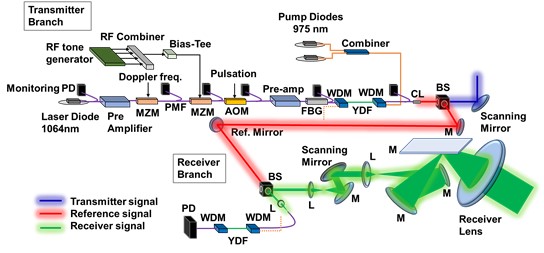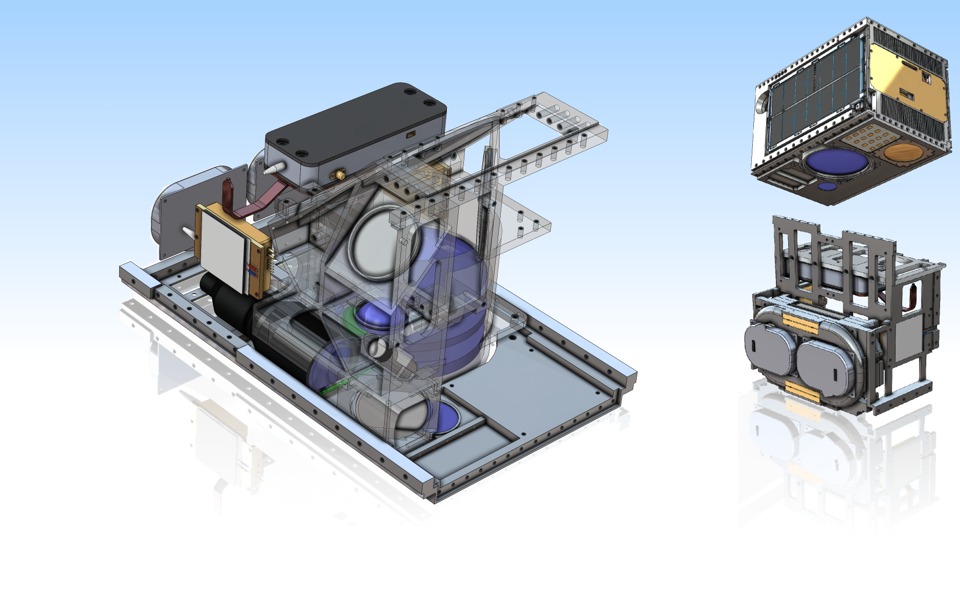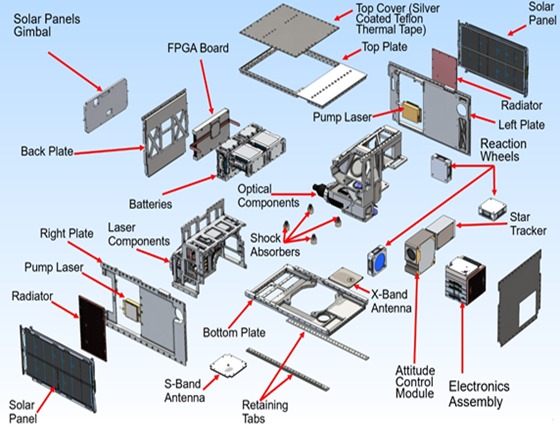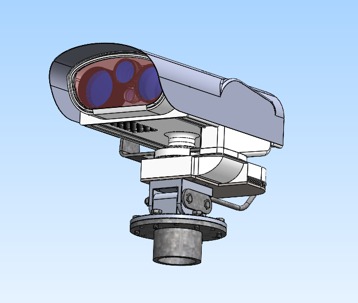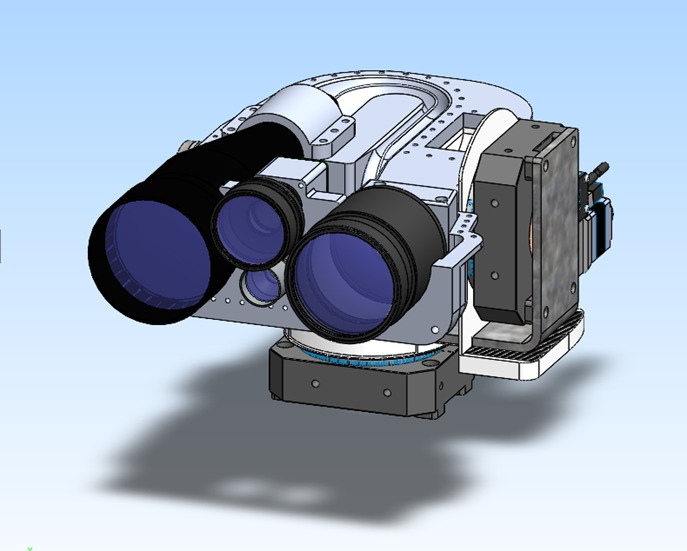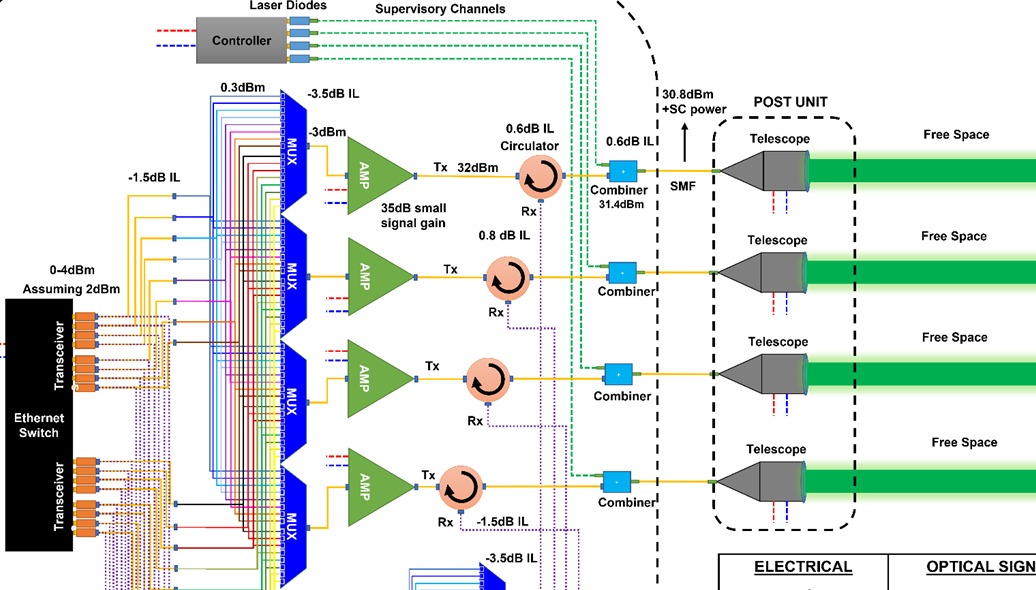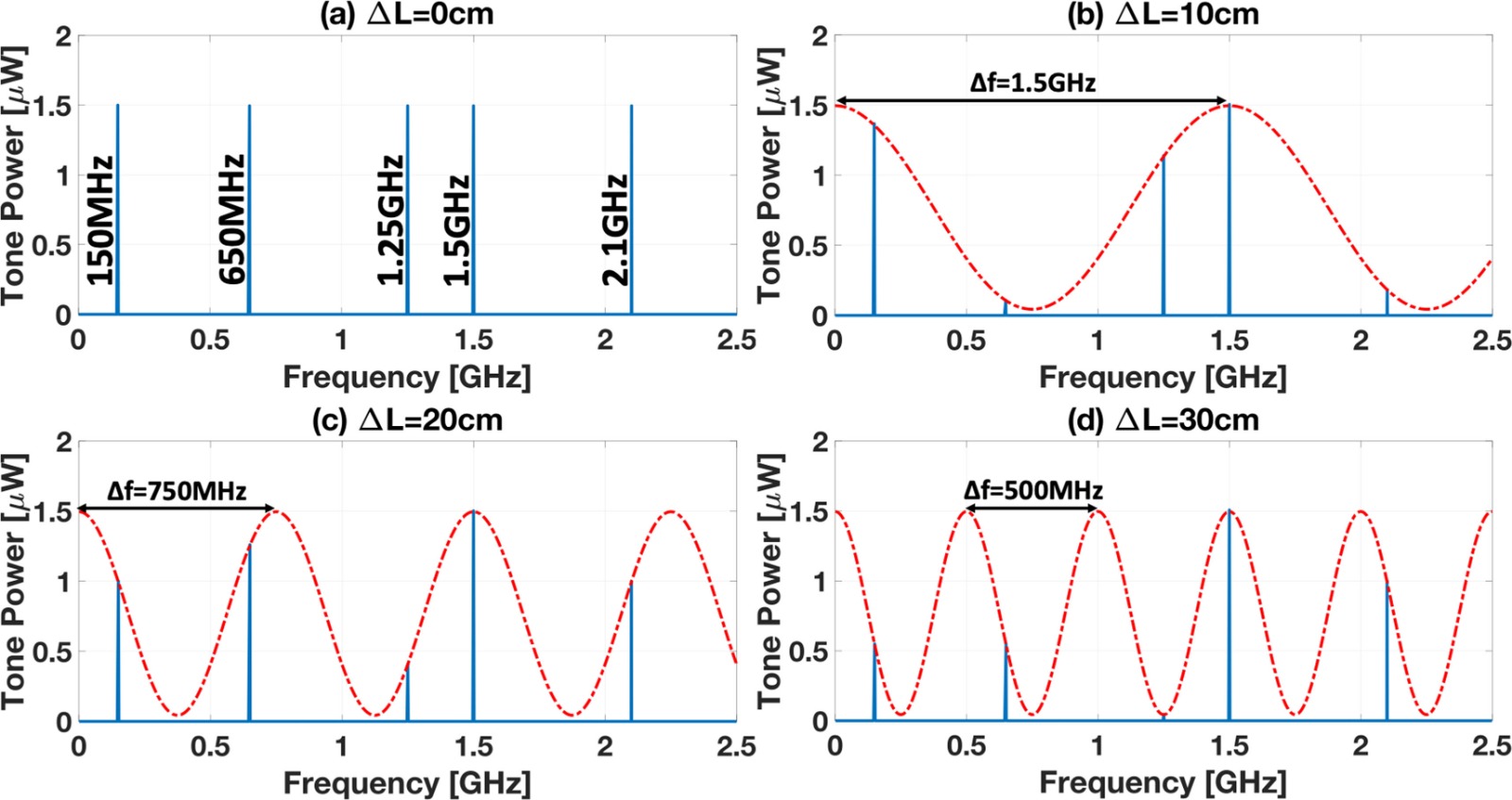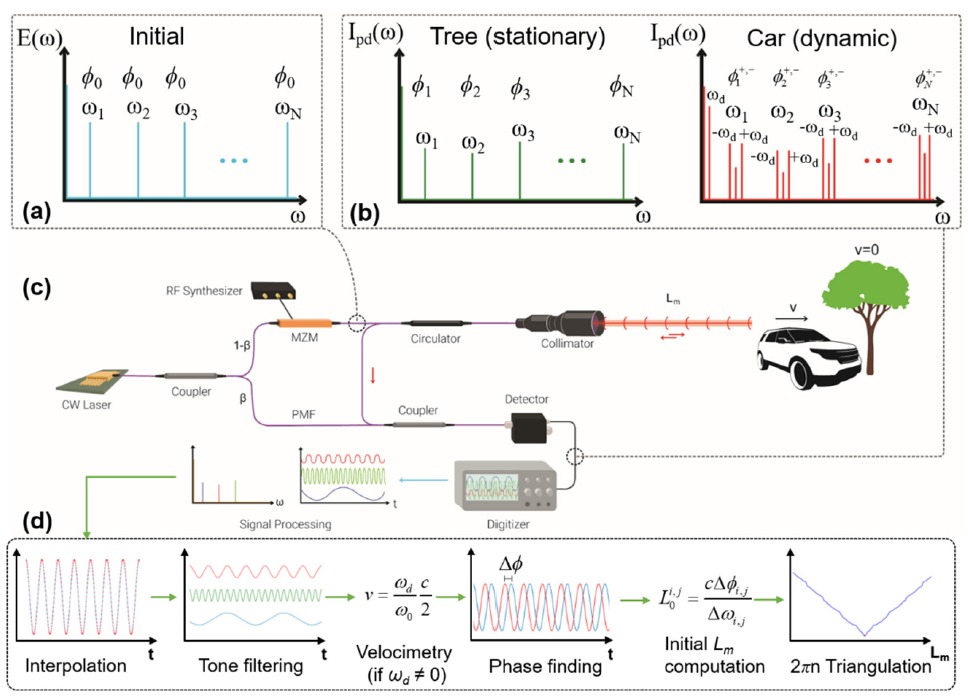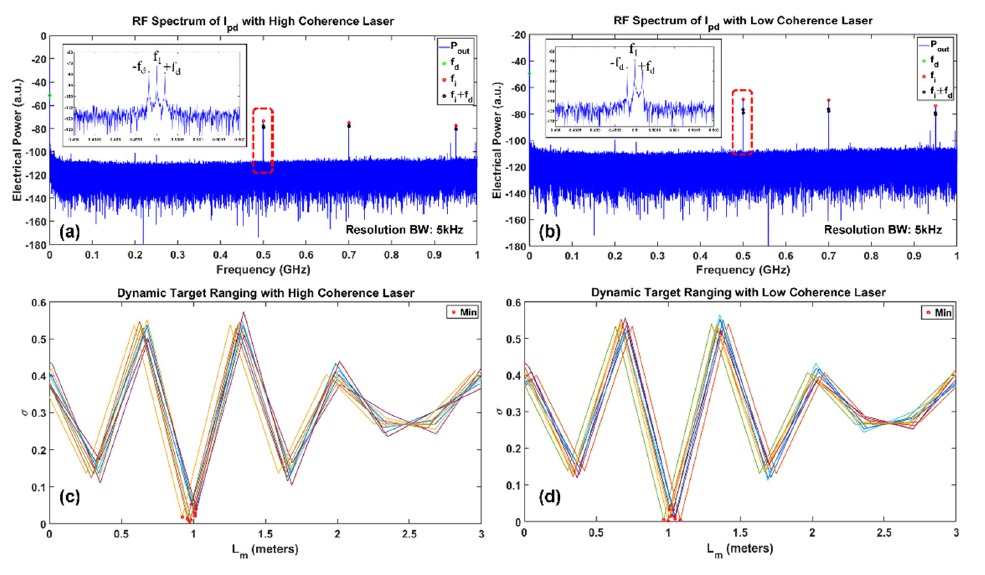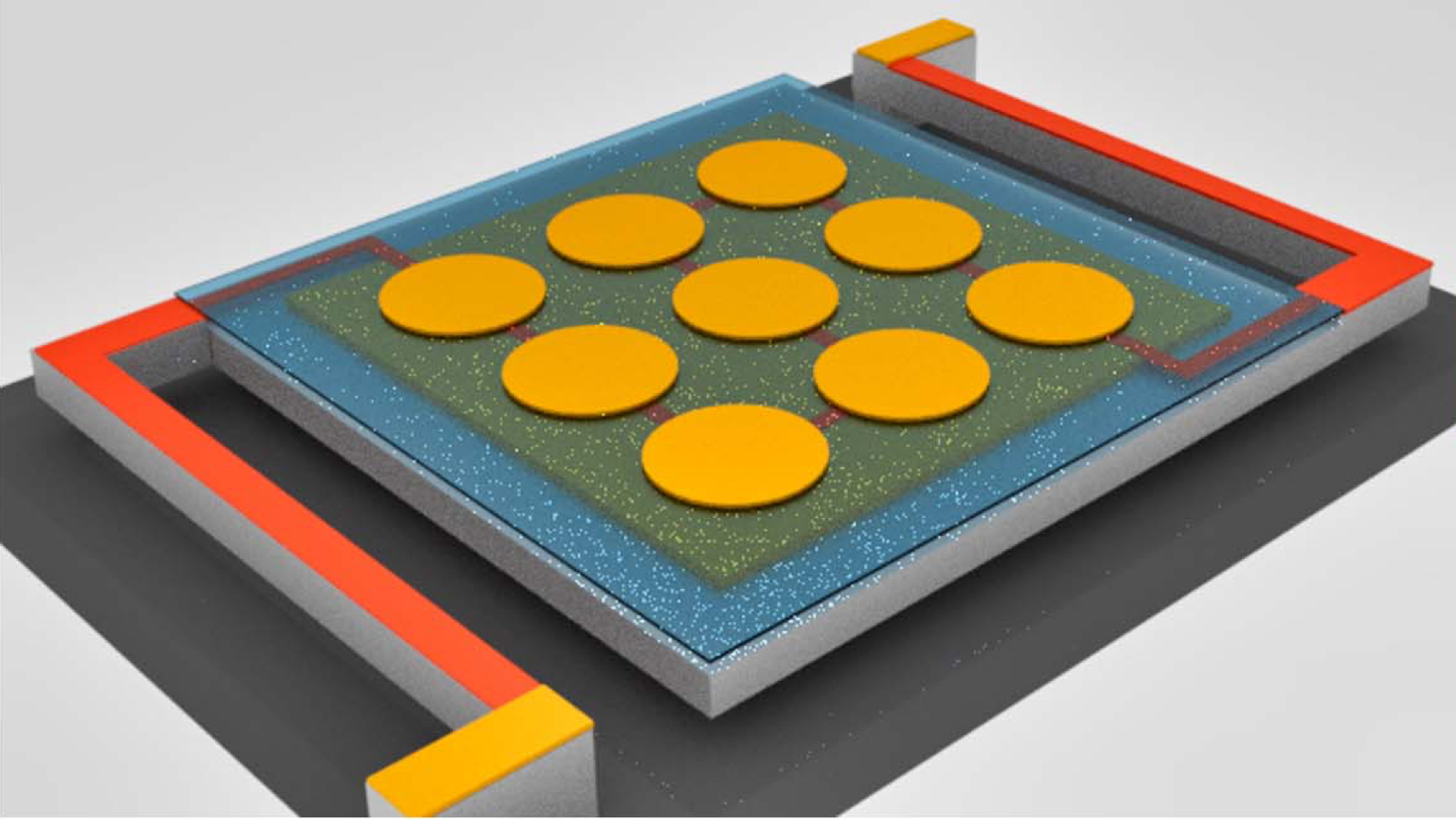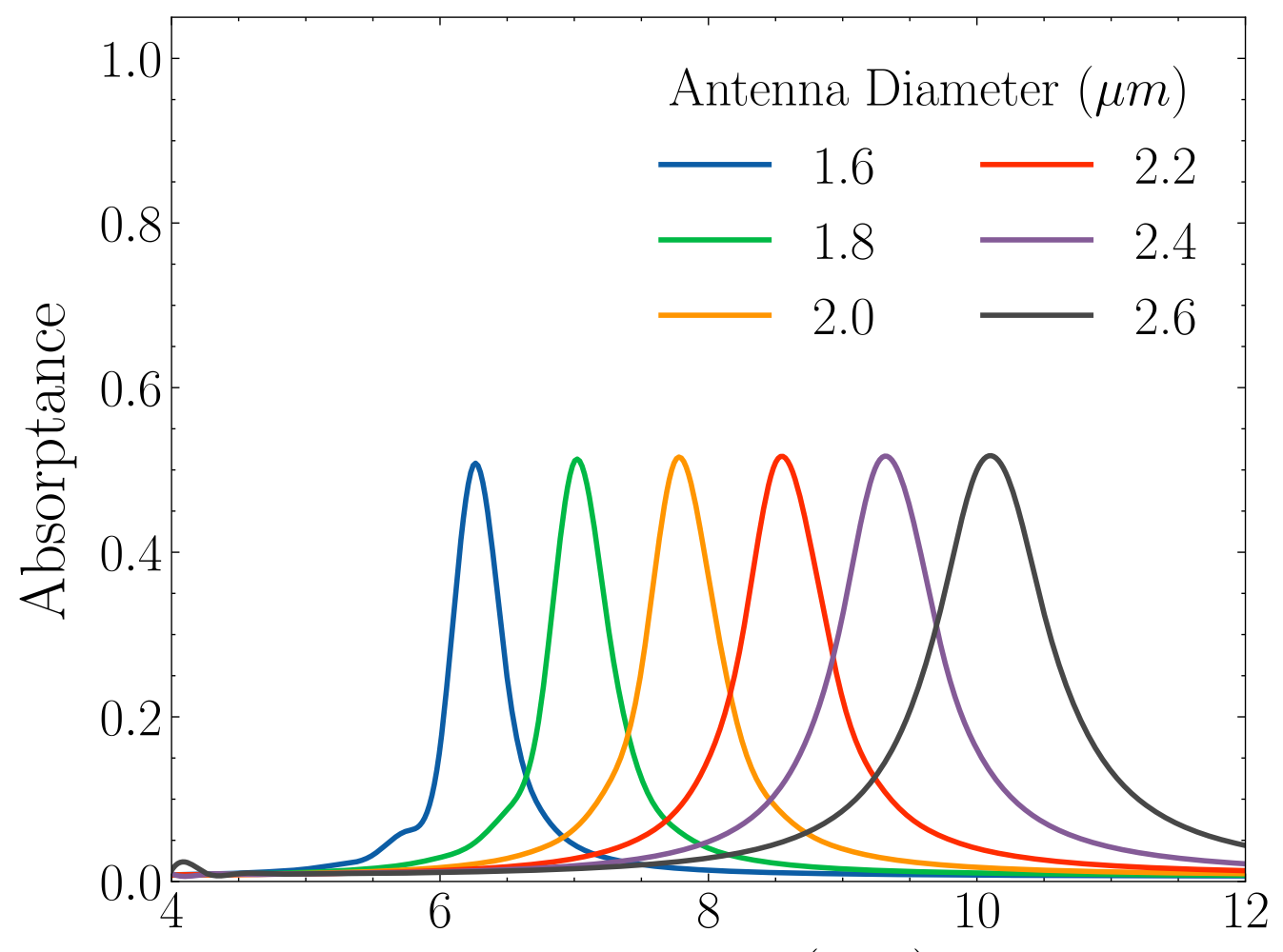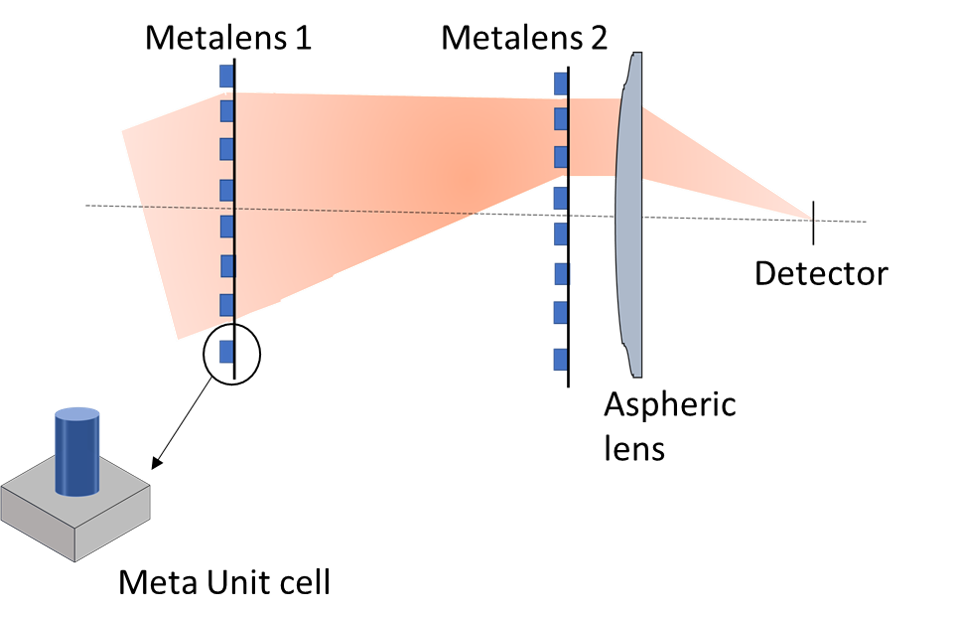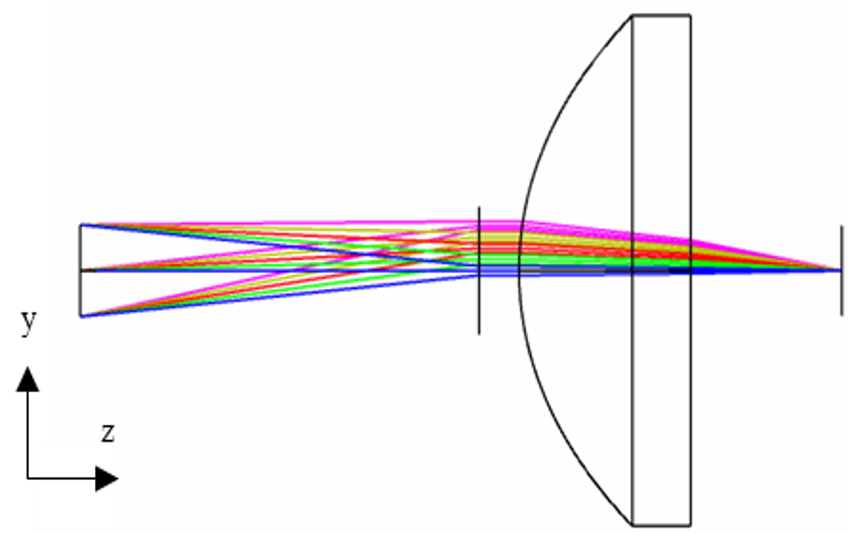Lidar Application for CubeSat to measure littoral ocean dynamics
In this project, we designed a 12 unit (each unit is 10x10x10cm) CubeSat for oceanography purposes. The goal is to measure the ocean surface height and wind speed and direction on the ocean. The expected resolution level is cm level at each measurement point. To achieve this, we developed a new Lidar technology called Phase-Based Multi-Tone Continuous Wave Lidar. This new technology is capable of performing high-resolution range and velocity measurements over long distances, unlike the other Lidar alternatives. The other alternatives are either power-hungry, providing smaller resolution, or not suitable for satellite systems. The developed Lidar unit is applicable for CubeSat platforms, meaning that the power, volume, weight, and stability requirements are considered during the design process. The complete CubeSat includes the power electronics, Lidar module, GPS module, CPU module, communication module, attitude module, etc.
Free Space Optical Communication
In this project, we are targetting to establish a free-space optical communication link for <20km distances. The designed system is capable of transmitting data at a rate of 100Gb/s. To realize this, we utilize 16 DWDM transceivers which are 10Gb/s SFP+ units. The optical link is realized via a series of control units that includes wide area APDs for coarse alignment and supervisory communication links and CMOS cameras as tracker units to establish optical communication by creating a feedback mechanism with the homemade gimbal unit.
Amplitude-Based Multi-Tone Continuous Wave Lidar (AB-MTCW)
A multi-tone modulated continuous wave (MTCW) Lidar technology that can provide high precision range and velocity information of static and moving targets. Here, CW lasers are simultaneously modulated with a few carefully selected RF tones. At the receiver, the interference of the scattered light with the reference is detected by a photodiode. Since, the acquired light travels to the target and back to the beam splitter, the interference signal carries the range and velocity information of the target at the amplitude and phase of the detected RF tones. We utilize the relative amplitude variations in RF tones to extract the range and velocity information.
Phase-Based Multi-Tone Continuous Wave (PB-MTCW Lidar)
In this technique, instead of employing any form of frequency, phase, or amplitude sweeping, we modulate a CW laser with multiple phase-locked radio-frequency (RF) tones to generate stable sidebands using a Mach-Zehnder modulator (MZM) under a linear modulation configuration. Then we utilize the phases of individual tones that are encoded in the echo signal after heterodyning with the unmodulated local oscillator. Since the absolute value of the phase differences between the reference, i.e. local oscillator, and the echo signal are impaired due beyond the coherence length of the laser, we utilize the phase differences between RF tones that are free from common noise terms. The phase difference of the individual sidebands reveals the target distance, while the acquired Doppler shift produces the target velocity, simultaneously.
Bolometric Infrared Detector
A bolometric infrared detector incorporating plasmonic absorber and VO2 nanobeam transducer facilitating improvement in thermal and spatial resolution. Designed particularly to detect objects near human body temperature or radiation at 10µm. The design is highly selective and tunable to address different applications. We achieve 12µm x 12µm pixel dimension and <4 mK NETD while maintaining a responsivity of>700kV/W.
Wide Angle Metalens Receiver for Free Space Optical Communication
Conventional free space optical receiver offers limited field of view. Our metalens based receiver offer wide field of view and can capture multiple incident angles with single detector on optical axis. Phase profile of metalenses can be optimized for specific system goals such as receiver length, system aperture, maximum incident angle.
STT-RAM Cells
We showed that plasmonic drag effect can be utilized to facilitate efficient conversion of light to electrical signal in STT-RAM cells without the need for III-V semiconductor materials. This can pave the way for parallel readout of STT-RAM cells, electronic considerations to be studied.
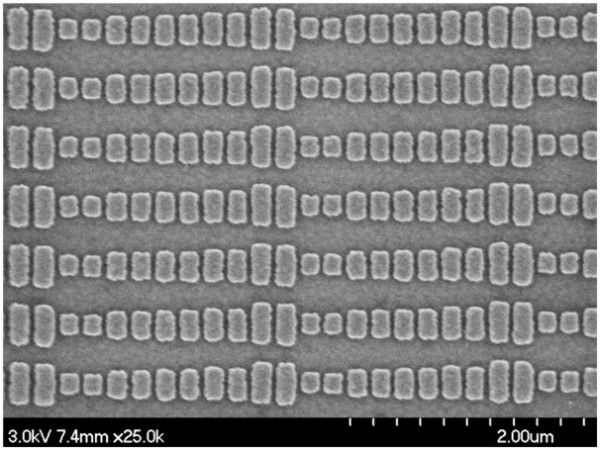
Gap-plasmon Metasurface
A sub-wavelength GPM-based grating at telecommunication wavelengths has been designed and fabricated. 75.6% power efficiency with ~ 0.4deg / 10nm spatial dispersion has been measured for TE polarized waves at normal incidence. The fabricated device has been tested in a wide area real-time dispersive imaging system and < 300 um spatial resolution has been demonstrated experimentally.

Time Stretch Systems
We demonstrate a fast dispersive laser scanning system by using MEMS digital micro-mirror arrays technology. The proposed technique utilizes real-time dispersive imaging system, which captures spectrally encoded images with a single photodetector at pulse repititon rate via space-time mapping technology. Wide area scanning capability is introduced by using individually addressable micro-mirror arrays as a beam deflector.
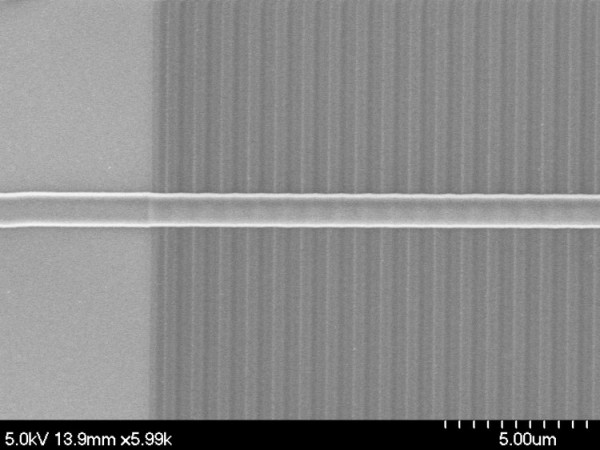
Optical Leaky Wave Antenna
We experimentally demonstrate directive radiation from a silicon nitride (Si3N4) waveguide-based OLWA. The OLWA design comprises 50 crystalline Si perturbations buried inside the waveguide, with a period of 1 μm, each with a length of 260 nm and a height of 150 nm, leading to a directive radiation pattern at telecom wavelengths. The measured far field radiation pattern at the wavelength of 1540 nm is very directive, with the maximum intensity at the angle of 84.4° relative to the waveguide axis and a half-power beam width around 6.2°.
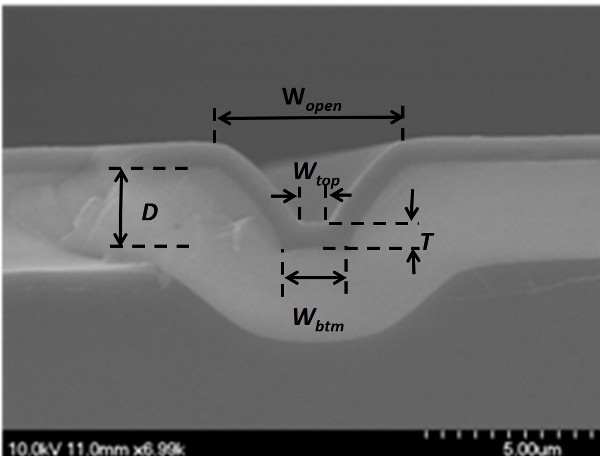
Trench Waveguide
We demonstrate a novel technique to fabricate sub-micron silicon nitride waveguides using conventional contact lithography with MEMS-grade photomasks. Potassium hydroxide anisotropic etching of silicon facilitates line reduction and roughness smoothing and is key to the technique. The fabricated waveguides is measured to have a propagation loss of 0.8dB/cm and nonlinear coefficient of γ = 0.3/W/m. A low anomalous dispersion of <100ps/nm/km is also predicted
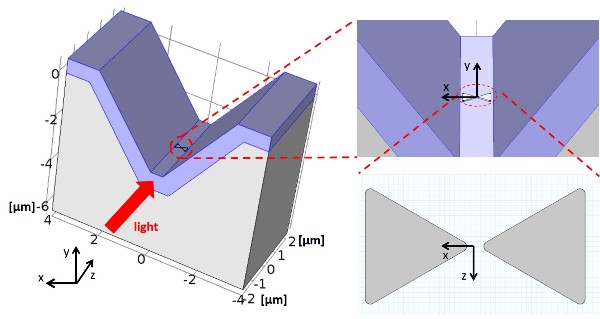
Plasmonic Optical Trapping
We demonstrate optical trapping using a silicon nitride (Si3N4) trench waveguide on which bowtie plasmonic nanoantennas are employed for enhancing optical force. The waveguide evanescent field is transformed and then enhanced by the plasmonic nanoantennas deposited on the waveguide surface. We show that with gold bowtie nanoantennas, the waveguide system exhibits outstanding trapping capability on 10 nm polystyrene nanoparticles, due to a 60-fold electric field enhancement in proximity of the nanoantenna gap. This enhancement causes a boost of the optical trapping force by three orders of magnitude.
Optical Tweezing
We present a new approach for electronic control of optical tweezers by using space-time‐wavelength mapping (STWM), a technique that uses time‐domain-modulation to control local intensity values, and hence the resulting optical force, in space. The proposed technique enables direct control of magnitude, location, and polarity of force hot‐spots created by Lorentz force (gradient force).
Modulation Index Booster
The spur-free dynamic range (SFDR) of the MiBo approach is experimentally and numerically measured. Experimental SFDR data is reported at 10 GHz. By utilizing commercial link simulators (VPI transmission maker) with realistic component models simulations at 10 GHz and 100 GHz enable predictive SFDR analysis.

